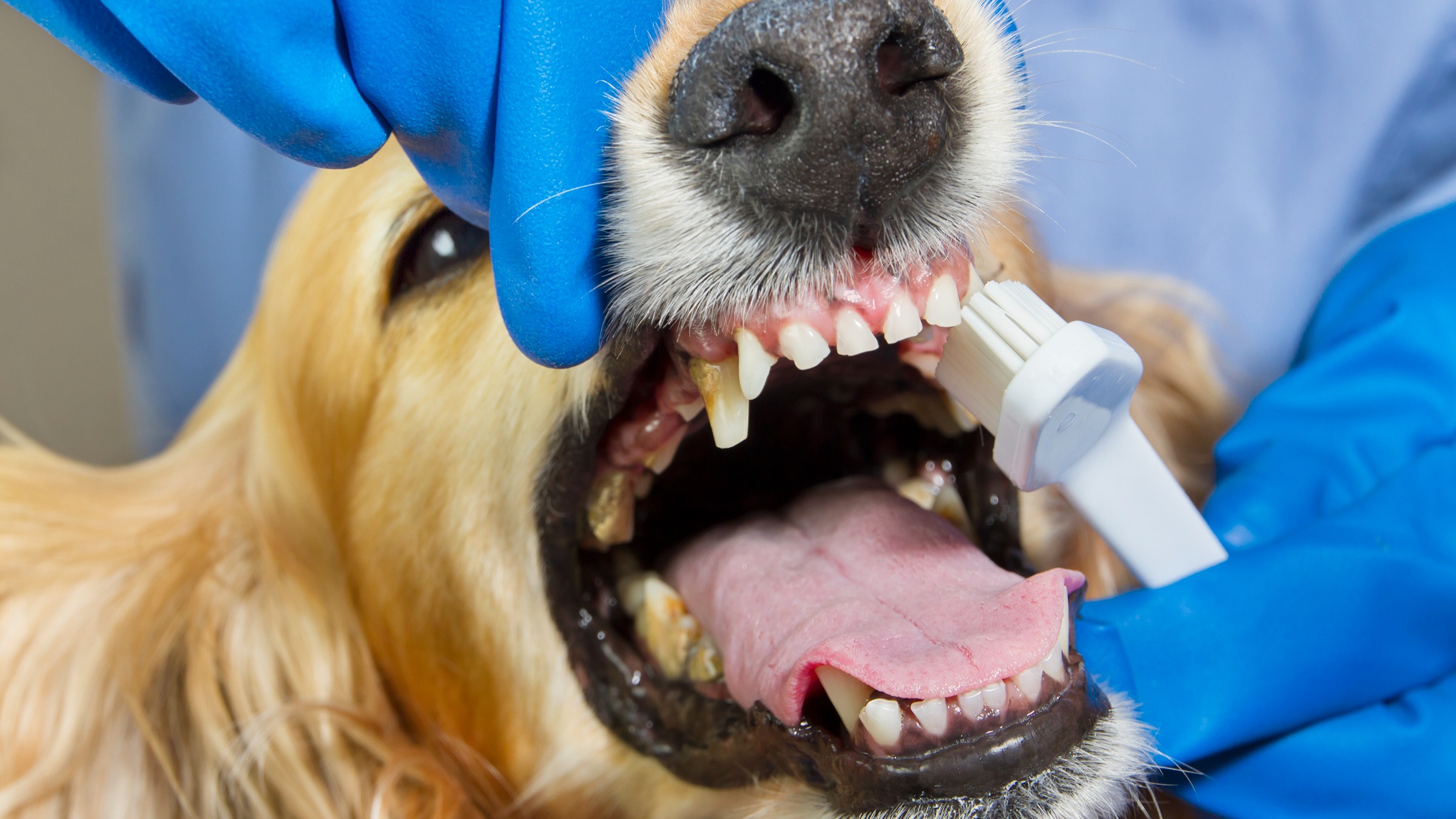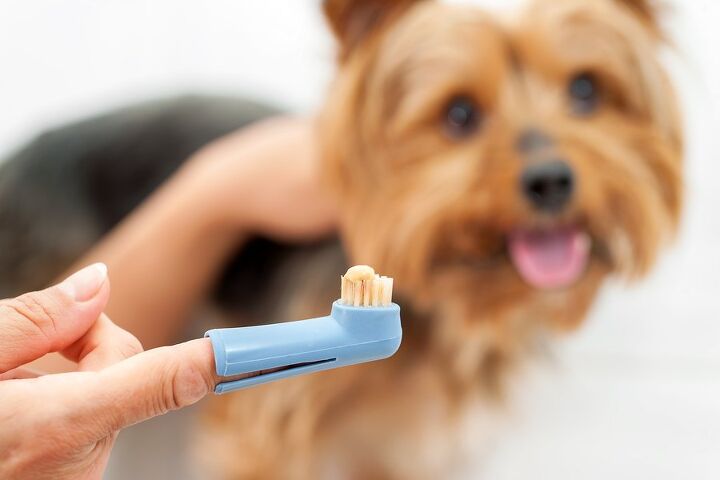Dental care is an essential aspect of maintaining your dog’s overall health and well-being. Just like humans, dogs require regular dental cleanings to prevent dental diseases and maintain oral hygiene. In this comprehensive guide, we’ll delve into the significance of dog dental cleaning, exploring how often it should be done and why it’s crucial for your furry friend’s health.
Why Dental Cleaning Matters for Dogs

- Prevention of Dental Diseases: Regular dental cleanings help prevent common dental diseases such as periodontal disease, gingivitis, and tooth decay in dogs. By removing plaque and tartar buildup, veterinary dentists can mitigate the risk of these conditions, which can cause pain, discomfort, and even lead to systemic health issues if left untreated.
- Maintenance of Oral Hygiene: Just like humans, dogs need proper oral hygiene to maintain healthy teeth and gums. Dental cleanings remove accumulated plaque, tartar, and bacteria from the teeth and gum line, preventing the onset of oral health problems and promoting fresher breath.
- Reduction of Oral Pain and Discomfort: Dental diseases can cause significant pain and discomfort for dogs, affecting their ability to eat, chew, and enjoy life. Regular cleanings help alleviate oral pain by addressing underlying issues such as inflamed gums, infected teeth, and oral lesions.
- Prevention of Systemic Health Issues: Poor oral health in dogs can have far-reaching consequences beyond the mouth. Bacteria from dental infections can enter the bloodstream and spread to other parts of the body, leading to serious systemic health issues such as heart disease, liver problems, and kidney infections. By maintaining optimal oral health, we can reduce the risk of these secondary health complications.
- Improvement of Quality of Life: Dogs rely on their teeth for essential activities such as eating, playing, and exploring their environment. By ensuring good dental health through regular cleanings, we can enhance their quality of life and allow them to enjoy these activities without discomfort or limitations.
How Often Should You Schedule Dog Dental Cleanings?

- General Guidelines and Individual Needs: While a general recommendation is to schedule dental cleanings for dogs at least once a year, individual factors such as breed, age, and existing oral health conditions can influence the frequency. Larger breeds may require fewer cleanings per year compared to smaller breeds, while dogs with specific health issues may need more frequent attention.
- Breed-Specific Considerations: Certain dog breeds are predisposed to dental problems due to factors such as jaw structure, tooth alignment, and genetic predispositions. Brachycephalic breeds, for example, often face dental challenges due to their shortened muzzles and crowded teeth. Owners of these breeds should be vigilant about scheduling regular dental cleanings to prevent complications.
- Pre-existing Health Conditions: Dogs with pre-existing health conditions, such as diabetes, autoimmune disorders, or a history of dental issues, may have heightened dental care needs. These conditions can compromise the immune system and increase the risk of oral infections, necessitating more frequent dental cleanings to maintain oral health and prevent complications.
- Signs of Dental Problems: Observing signs indicating potential dental issues, such as bad breath, visible tartar buildup, gum inflammation, changes in eating habits, or excessive drooling, may prompt the need for more frequent dental cleanings. Early intervention can help address emerging problems and prevent them from progressing into more severe conditions.
- Veterinarian Recommendations and Assessments: Regular consultations with your veterinarian are essential for assessing your dog’s oral health and determining the appropriate frequency of dental cleanings. Your vet can evaluate your dog’s specific needs, consider any underlying health conditions, and provide personalized recommendations tailored to your pet’s well-being.
Signs That Your Dog Needs a Dental Cleaning

- Persistent Bad Breath (Halitosis): Foul-smelling breath that persists despite regular brushing or dental chews is often a sign of dental issues in dogs. Halitosis can indicate the presence of plaque, tartar, or bacterial infections in the mouth, all of which may necessitate a dental cleaning.
- Visible Tartar Buildup and Discoloration: Accumulation of yellowish-brown tartar on the teeth surface, especially along the gum line, is a common sign of poor oral hygiene. Discoloration of the teeth may also occur due to the deposition of plaque and calculus, indicating the need for professional cleaning to remove these deposits effectively.
- Gum Inflammation and Bleeding: Red, swollen gums that bleed easily, particularly during brushing or chewing, are indicative of gingivitis or periodontal disease. These conditions can cause discomfort and pain for your dog and may require dental cleaning to alleviate inflammation and prevent further gum disease progression.
- Changes in Eating Habits: Behavioral changes related to eating habits, such as reluctance to eat, dropping food while chewing, or favoring one side of the mouth, can signal dental pain or discomfort. Discomfort while eating may result from dental issues such as tooth decay, gum disease, or oral lesions, prompting the need for a dental evaluation and cleaning.
- Excessive Drooling and Pawing at the Mouth: Increased drooling or pawing at the mouth can indicate oral pain, irritation, or discomfort in dogs. Dogs may exhibit these behaviors in response to dental issues such as toothaches, gum inflammation, or oral infections, necessitating prompt dental attention to address the underlying cause.
- Visible Signs of Oral Discomfort: Observable signs of oral discomfort, such as pawing at the mouth, rubbing the face against surfaces, or vocalizing while eating, drinking, or chewing, may indicate dental problems requiring professional intervention. These behaviors suggest that your dog is experiencing pain or discomfort in the mouth and may benefit from a dental cleaning to alleviate symptoms and improve oral health.
The Dental Cleaning Process for Dogs

- Pre-Anesthetic Evaluation: Before the dental cleaning procedure, your veterinarian will conduct a thorough pre-anesthetic evaluation to assess your dog’s overall health and suitability for anesthesia. This may involve blood tests to check liver and kidney function, as well as cardiac evaluations to ensure your dog’s heart is healthy enough for anesthesia.
- Anesthesia Administration: Dental cleaning for dogs typically requires general anesthesia to ensure their comfort and safety during the procedure. Anesthesia allows the veterinary team to perform a comprehensive dental examination and cleaning without causing stress or discomfort to the patient.
- Comprehensive Oral Examination: Once your dog is under anesthesia, the veterinarian will conduct a detailed examination of their mouth, teeth, and gums. This examination may include assessing for signs of dental disease, such as plaque buildup, tartar accumulation, gingivitis, periodontal pockets, tooth fractures, or oral lesions.
- Dental X-Rays: Dental X-rays are an essential component of the dental cleaning process for dogs. X-rays help identify dental issues that may not be visible during the visual examination alone, such as tooth root abscesses, bone loss, or hidden dental abnormalities. These radiographs enable the veterinary team to diagnose and treat dental problems accurately.
- Plaque and Tartar Removal: Using specialized dental instruments, such as scalers and ultrasonic cleaners, the veterinary dentist will remove plaque and tartar buildup from your dog’s teeth. Manual scaling and ultrasonic scaling techniques are employed to remove deposits from both the tooth surfaces and below the gum line, where bacteria and plaque accumulate.
- Polishing: After plaque and tartar removal, the teeth are polished to smoothen the enamel surfaces and minimize plaque adherence. Polishing helps create a smooth, clean surface that is less prone to bacterial attachment and plaque formation, promoting better oral hygiene and reducing the risk of dental disease recurrence.
- Post-Cleaning Examination: Following the cleaning procedure, the veterinarian will conduct a final examination to ensure that all dental issues have been addressed adequately. Any remaining concerns or recommendations for further treatment, such as tooth extractions or follow-up care, will be discussed with you at this time.
- Recovery and Post-Operative Care: Your dog will require a period of recovery after the dental cleaning procedure. The veterinary team will monitor your dog closely during this time to ensure they wake up from anesthesia smoothly and experience minimal discomfort. Depending on the extent of the cleaning and any additional procedures performed, your dog may be discharged on the same day or require overnight observation.
Conclusion
Regular dental cleaning is paramount for maintaining your dog’s oral health and overall well-being. By adhering to recommended cleaning schedules and staying vigilant for signs of dental problems, you can help ensure that your furry companion enjoys a healthy and happy life. Remember, proactive dental care is key to preventing dental diseases and safeguarding your dog’s quality of life.

